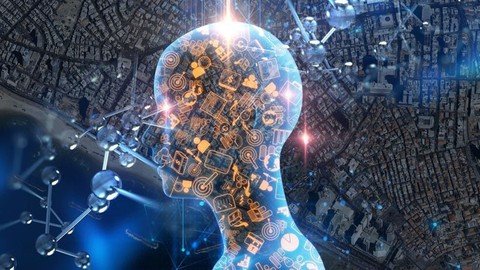
Last updated 11/2021
MP4 | Video: h264, 1280×720 | Audio: AAC, 44.1 KHz
Language: English | Size: 6.05 GB | Duration: 8h 13m
Understand & apply machine learning and deep learning for geospatial tasks (GIS and Remote Sensing) in QGIS and ArcGIS
What you’ll learn
Fully understand the basics of Machine Learning and Machine Learning in GIS
Learn the most popular open-source GIS and Remote Sensing software tools (QGIS, SCP, OTB toolbox)
Learn the market leading GIS software ArcGIS (ArcMap) and ArcGIS Pro
Learn about supervise and unsupervised learning and their applications in GIS
Apply Machine Learning image classification in QGIS and ArcGIS
Run segmentation and object-based image analysis in QGIS and ArcGIS
Learn and apply regression modelling for GIS tasks
Understand the main developments in the field of Artificial Intelligence, deep learning and machine learning as applied to GIS
Complete two independent projects on Machine Learning and Deep Learning
Understand basics of deep learning as a part of machine learning
Apply deep learning algorithms , such as convolution neural networks, in GIS with ArcGIS Pro
Requirements
Basic knowledge of manipulating spatial (image) data will be an advantage but not a must
The course will be demonstrated using a QGIS version of Windows PC. Mac and Linux users will have to adapt the instructions to their operating systems.
Access to ArcGIS (Pro version 2.5 and ArcMAp 10.6 or higher): free trial available on the ESRI website
Description
This course is designed to equip you with the theoretical and practical knowledge of Machine Learning and Deep Learning in QGIS and ArcGIS as applied for geospatial analysis, namely Geographic Information Systems (GIS) and Remote Sensing. By the end of the course, you will feel confident and completely understand the Machine and Deep Learning applications in Remote Sensing & GIS technology and how to use Machine and Deep Learning algorithms for various Remote Sensing & GIS tasks, such as land use and land cover mapping (classifications) and object-based image analysis (segmentation, object detection) and regression modeling in QGIS and ArcGIS software. This course will also prepare you for using GIS with open source and free tools (QGIS) and a market-leading software (ArcGIS).This course is designed to take users who use QGIS & ArcGIS for basic geospatial data/GIS/Remote Sensing analysis to perform more advanced geospatial analysis tasks including object-based image analysis using a variety of different data and applying Deep Learning & Machine Learning state of the art algorithms. In addition to making you proficient in QGIS for spatial data analysis, you will be introduced to another powerful processing toolbox – Orfeo Toolbox, and to the exciting capabilities of ArcMap and ArcGIS PRO!In the course, you will be able to apply such Machine Learning algorithms as Random Forest, Support Vector Machines, Decision Trees, Convolutional Neural Networks (and others) for Remote Sensing and geospatial tasks. You will also learn how to conduct regression modeling for GIS tasks in ArcGIS. On top of that, you will practice GIS & Remote Sensing by completing two independent GIS projects by exploring the power of Machine Learning and Deep Learning analysis in QGIS and ArcGIS.This course is different from other training resources. Each lecture seeks to enhance your GIS and Remote Sensing skills in a demonstrable and easy-to-follow manner and provide you with practically implementable solutions. You’ll be able to start analyzing spatial data for your projects and gain appreciation from your future employers with your advanced GIS & Remote Sensing skills and knowledge of cutting-edge geospatial methods.The course is ideal for professionals such as geographers, programmers, social scientists, geologists, GIS & Remote Sensing experts, and all other experts who need to use maps in their field and would like to learn more about Machine Learning in GIS.One important part of the course is the practical exercises. You will be given some precise instructions and datasets to create maps based on Machine Learning algorithms using the QGIS and ArcGIS software tools.
Overview
Section 1: Introduction
Lecture 1 Introduction
Lecture 2 Introduction to Geographic Information Systems (GIS)
Lecture 3 Introduction to Remote Sensing
Lecture 4 Applications of GIS and Remote Sensing
Section 2: Software used in this course: QGIS and ArcGIS 10.6 and ArcGIS Pro
Lecture 5 QGIS version information
Lecture 6 Installation of QGIS
Lecture 7 Semi-Automatic Classification Plugin for QGIS
Lecture 8 Intsalling plug-ins for QGIS
Section 3: On Machine Learning in GIS and Remote Sensing: theoretical background
Lecture 9 Introduction: Machine Learning
Lecture 10 On Machine Learning in GIS and Remote Sensing: theoretical background
Lecture 11 Supervised and Unsupervised Learning (classification) in GIS and Remote Sensing
Lecture 12 Lab: Image data acquisition in QGIS
Lecture 13 Common algorithms of image classification
Lecture 14 Land cover classification on the cloud using EO browser
Lecture 15 Regression Analysis
Lecture 16 Prediction in GIS and deep learning for Big Data Analysis
Section 4: Unsupervided Learning in ArcGIS
Lecture 17 Overview of Machine Learning for Image Classification in ArcGIS
Lecture 18 ArcGIS Software
Lecture 19 Unsupervised LULC image analysis in ArcGIS
Section 5: Unsupervided Learning in QGIS
Lecture 20 Installing OTB plug-in for QGIS
Lecture 21 Unsupervised (K-means) image analysis in QGIS
Section 6: Supervised Machine Learning for LULC Classification in ArcGIS
Lecture 22 Stages of LULC supervised classification
Lecture 23 Lab: Creating Training data in ArcMap 10.6
Lecture 24 Lab: Supervised image classification with Support Vector Machines in ArcGIS
Section 7: Supervised Machine Learning in QGIS
Lecture 25 Lab: Supervided Learning based on Maximum Likelihood Algorithm
Lecture 26 Creating Training data for LULC mapping in QGIS
Lecture 27 Lab: LULC with the use of Minimum Distance Classification Algorithm
Lecture 28 Accuracy assessment of the map in QGIS
Lecture 29 Lab: Validation data creation
Lecture 30 Lab: Accuracy Assessment of LULC map in QGIS
Lecture 31 Random Forest supervised classification of Sentinel-2 image in QGIS
Lecture 32 Comparison of Random Forest and Decision Trees Classifier resilts
Section 8: Image Segmentation in GIS
Lecture 33 Principles of image segmentation for GIS and Remote Sensing analysis
Lecture 34 Lab: Downloading image data for segmentation analysis
Lecture 35 Lad: Perform Image Segmentation in ArcGIS
Lecture 36 Lab: Segmentation of satellite image in QGIS
Section 9: Object-based Image classification with Machine Learning algorithms in ArcGIS
Lecture 37 Object-based image classification (OBIA) VS pixel-based image classification
Lecture 38 Creating training data for object-based image classification in ArcGIS
Lecture 39 Object-based image classification (OBIA) in ArcGIS
Section 10: Regression modelling in GIS
Lecture 40 Regression Model: theory
Lecture 41 OSL modelling in GIS
Lecture 42 OSL modelling in ArcGIS
Section 11: Getting started with Deep learning in ArcGIS Pro
Lecture 43 Deep Learning in ArcGIS Pro
Lecture 44 Introduction to neural networks
Lecture 45 Deep learning in ArcGIS Pro: an overview
Lecture 46 Getting started with Deep learning in ArcGIS Pro
Section 12: Hands-on: Deep Learning in ArcGIS Pro
Lecture 47 Software used in this section: ArcGIS Pro
Lecture 48 Training data creation for convolutional (or deep) neural network (CNN)
Lecture 49 Lab: Image preparation for deep learning in ArcGIS Pro
Lecture 50 Lab: Training data creation for neural network in ArcGIS PRO 2.5
Lecture 51 Lab: Install deep learning frameworks for ArcGIS
Lecture 52 Deep Learning (CNN) model definition in ArcGIS PRO
Lecture 53 Lab: Deep Learning (CNN) model definition in ArcGIS PRO
Lecture 54 Apply deep learning model for object detection or image classification
Lecture 55 Lab: Detect image object with CNN (deep learning model) in ArcGIS Pro
Lecture 56 Summary
Section 13: Make it real: Implement your own Machine Learning Project
Lecture 57 Project 1: Supervised Learning for classification of Landsat data in QGIS
Lecture 58 Project 2: Deep Learning in ArcGIS Pro
Lecture 59 BONUS
The course is ideal for professionals such as geographers, programmers, social scientists, geologists, and all other experts who need to use maps in their field and would like to learn more about geospatial (GIS & Remote Sensing) analysis.
Password/解压密码www.tbtos.com


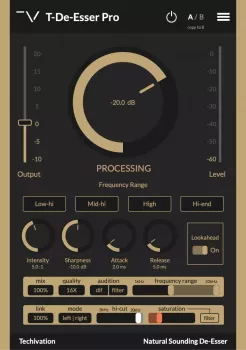
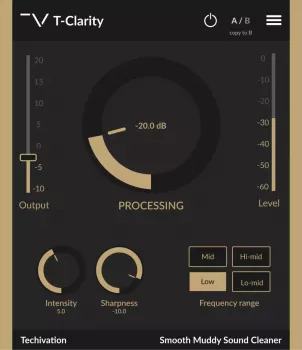
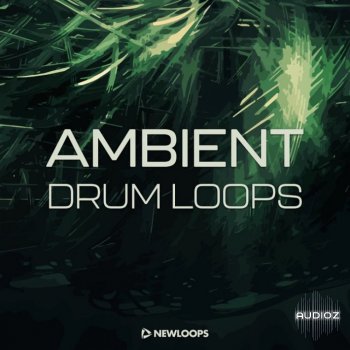
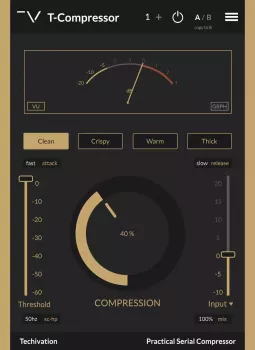
评论0